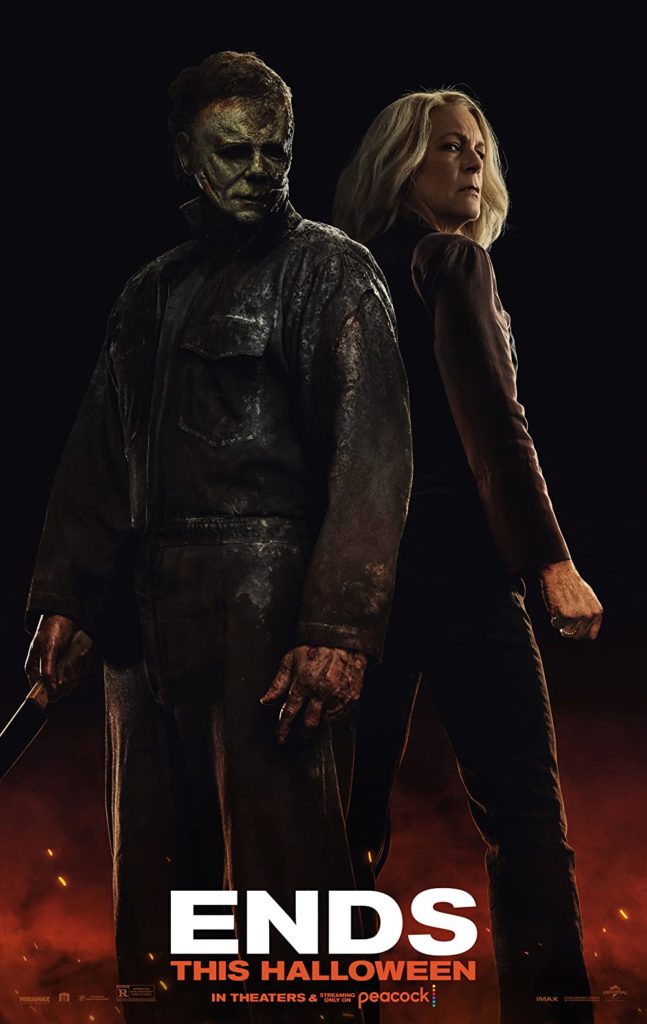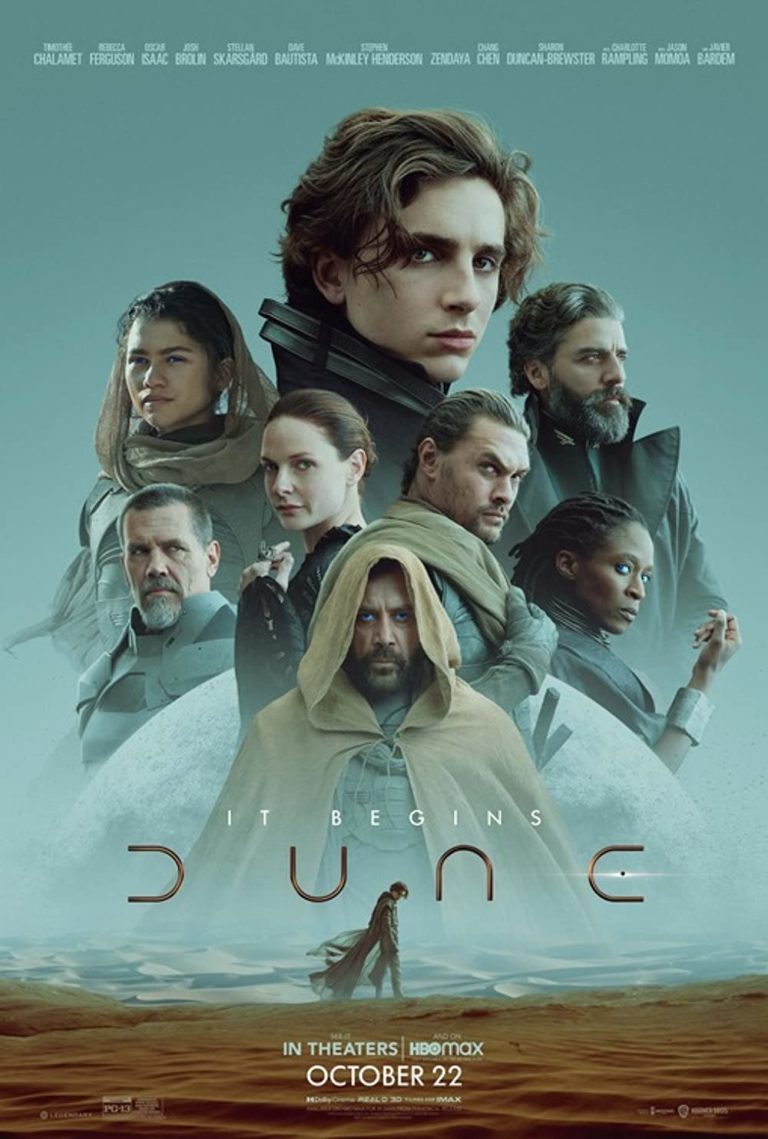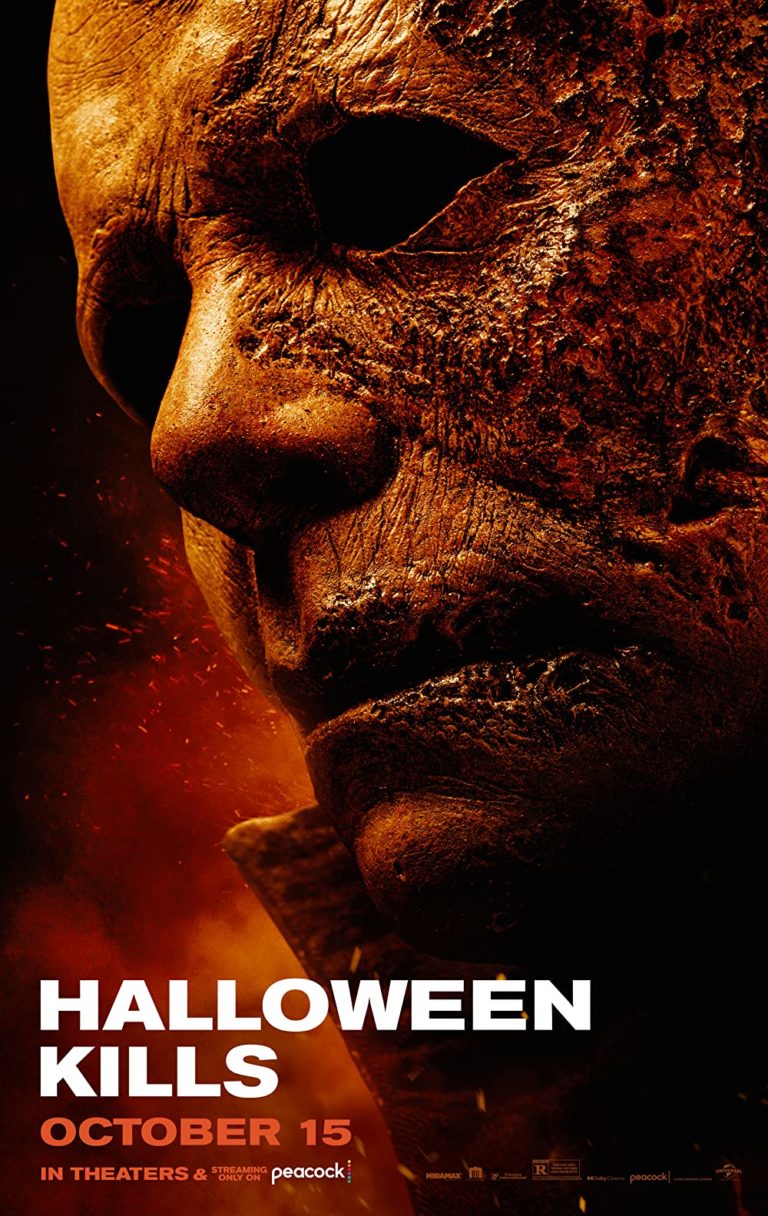
Halloween Ends aims to wrap up the iconic Halloween franchise once and for all, with the final face-off between Laurie Strode (Jamie Lee Curtis) and Michael Myers (James Jude Courtney and Nick Castle). Now, fans will speculate if this is the end of an era. I’m sure some (yours truly included) think it may be best to let it breathe before going into the next reboot or installment. We’d be lying to ourselves if we said there’s no way they could continue the franchise, especially if Halloween Ends proves successful at the box office. That said, Halloween Ends doesn’t focus on the possibilities of the franchise in the future. It instead focuses on the legacy of characters and connects itself thematically to Halloween (1978), Halloween (2018), and Halloween Kills (2021).
The movie picks up four years after the events of Halloween Kills. Laurie Strode is working on a memoir reflecting on her past experiences with The Shape. Michael Myers is nowhere to be found and has once again become a legend. The townspeople are all trying to forget what transpired a few years before; however, not everyone is a fan of Laurie. Some people blame her for the mayhem that ensued as Laurie tried to put an end to Michael in Halloween (2018) and Halloween Kills.
While Laurie attempts to find peace with the past, her granddaughter, Allyson (Andi Matichak), meets Corey Cunningham (Rohan Campbell), who also has a history of his own that he wishes he could forget. However, it seems the town of Haddonfield likes to remind him of what had occurred, as it’s no secret. I won’t go into detail about what that is, as it’s the opening scene, but I will say it’s one hell of a thrilling opener that starts the movie on a robust note and informs the viewers what is in store for them. Allyson relates to Corey, having been a survivor of the massacre a few years before herself. And through their chemistry, we see how broken Allyson is, though she refuses to let Laurie or anybody see it. All the while, Laurie is suspicious of Corey’s motivations and struggles to find the balance in her life she desperately needs. Director David Gordon Green shows the recovery of a broken town that had been fractured by an avoidable massacre. He sets up a sense of dread that looms in the background as a familiar evil is re-awakened in the shadows of Haddonfield.
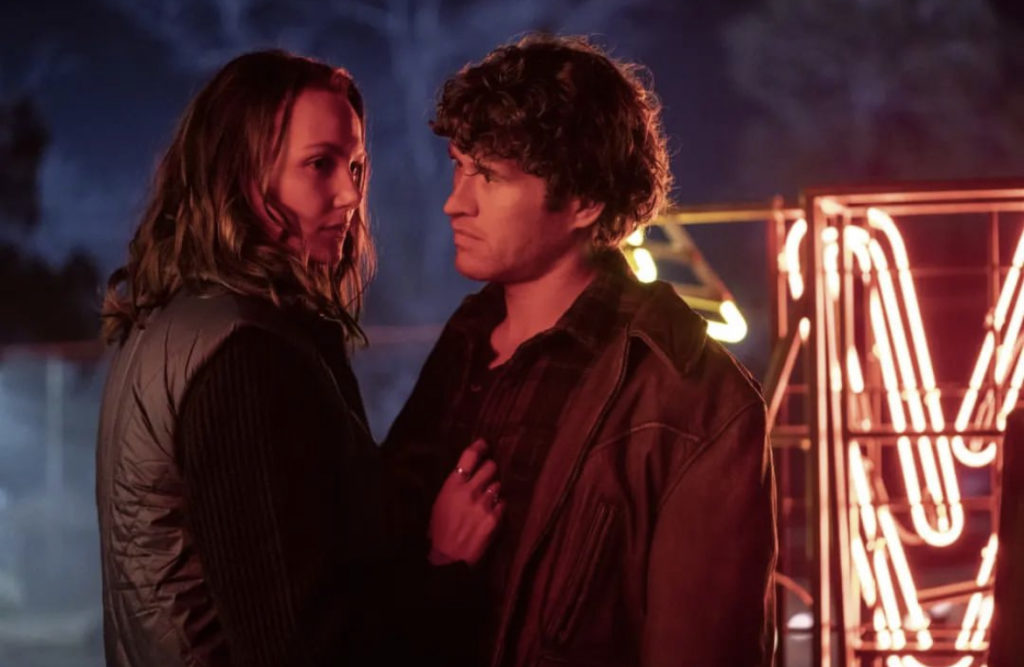
Halloween Ends is structurally and narratively different from the more recent installments. It no longer shines the spotlight on Laurie Strode or Michael Myers. Instead, it shines the spotlight on areas in relation to crossing paths with evil. That’s not to say that we don’t get to see Laurie or Michael shine. We see them both have their moments, one a little bit more than the other, and perhaps that’s where my main criticism comes into play. The movie does not have a whole lot of Michael Myers.
The film gives its reasoning for the lack of The Shape, which would be him hiding away after essentially being fatally injured from the mob beatdown in Halloween Kills. In hindsight, the film could have given him more screen time. I say that partially because I was expecting it in my screening, and I think fans were expecting it, too. Although the reason for his lack of screen time is valid enough with the logic the movie presents, there were still gaps in the film that could have been interesting had there been a little more Myers here and there. That’s not to say that he’s not in the film at all, or that his presence can’t be felt, because as I stated earlier, his presence is felt throughout the whole town as we watch them try and recover from the tragedy. Anybody saying he has no screen time whatsoever is selling the movie short. I think it’s just a little less than what we’re used to from all the previous entries.
But even with a little lackluster screentime from Michael Myers, David Gordon Green explores the effects of trauma through the interactions of Corey, Allyson, and Laurie. We watch these characters try to hide their pain and suffering and make the best of what they have. Even though Corey is not in any of the previous installments, Green somehow manages to muster up a cohesive arc with Corey that compliments what Laurie and Allyson have gone through and shines a new light on how Michael Myers came to be the terrifying menace of Haddonfield. Halloween Ends offers a unique approach to a franchise burdened by cliché slasher tropes and horribly-written sequels. Green doesn’t subvert the tropes of the slasher genre; he takes the franchise in a different direction to explore how evil is caused by an infection of untreated trauma.
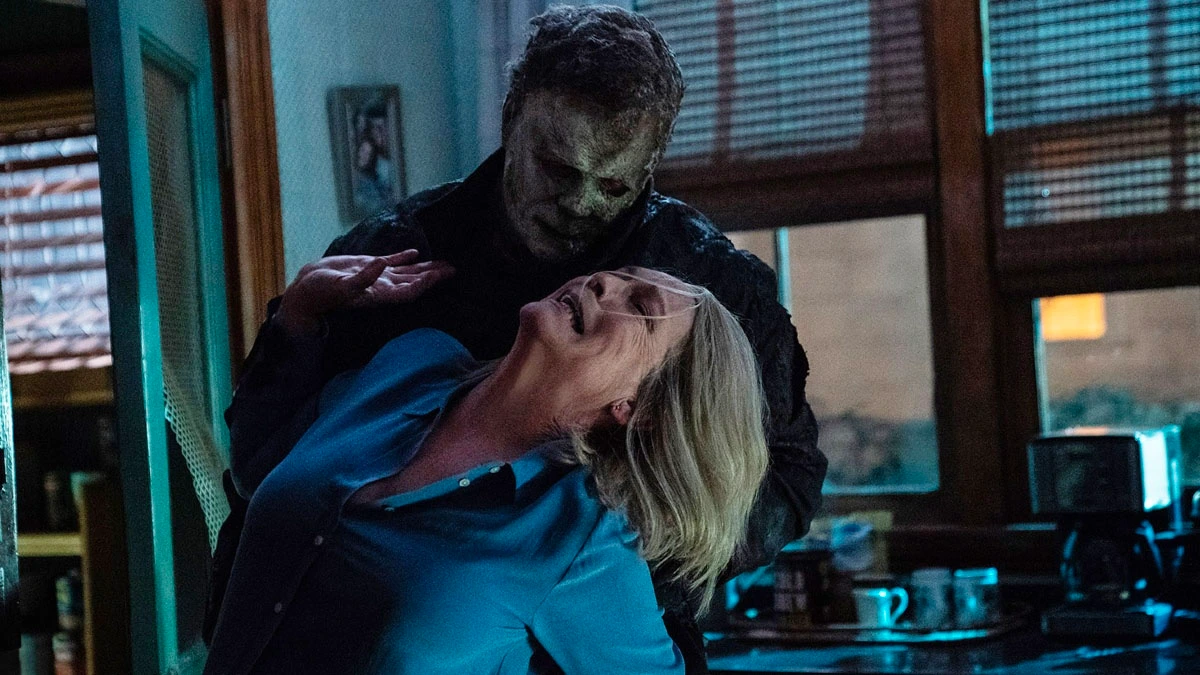
In Halloween (1978), John Carpenter terrified us by introducing a child corrupted by pure evil at a young age. When Michael Myers escapes the Haddonfield Sanitarium, evil is let loose on Halloween night as Myers hunts for his next victims. Carpenter painted Myers as being the Boogeyman hiding in the shadows. He was a force that was not to be reconciled. The presence of evil found within this deranged killer made him seem invincible to anybody who encountered him, except for Laurie Strode (and arguably Doctor Samuel Loomis), who walked away, but not without consequences.
Then in Halloween (2018), Laurie Strode deals with PTSD from the events 40 years prior. She convinced herself that since she was the only one to survive an encounter with Michael, he would be out to get her and only her. Laurie had built a self-contained prison-like trap for Michael Myers, thinking it would contain evil once and for all. Of course, when he re-escapes the asylum one last time, Laurie’s beliefs are shattered as he slashes his way through the innocents of Haddonfield. But as Allyson’s friends start getting killed off one by one, Laurie realizes that the chaos in Michael reaches far beyond him coming only for her, and she has to act quickly to put a stop to what was fabricated years before.
And in Halloween Kills, the movie focuses more on characters we should be familiar with from the first movie back in 1978, like Tommy Doyle and Lindsey Wallace. It’s no longer about Michael against Laurie; it’s about Michael against the rest of Haddonfield, who still view him as the Boogeyman, and rightfully so, as we see him brutally get worse with each person who stands in his way. The townspeople only reinforce this idea that Michael is some mythical freak of nature made of pure evil as they gather around to defend their town. And when Michael Myers is at his most vulnerable, the myth surrounding him becomes obsolete. He’s no longer the supernatural Boogeyman that the town had feared; he’s just a deranged lunatic wearing a mask who can be defeated in some capacity. The mob only got a quick glimpse of that before Michael recovered enough to make a name for himself again by hacking and slashing. But the truest consequence for Laurie, aside from losing half of the townspeople, is losing her daughter at the hands of Myers, making it just as personal as she thought it was from Halloween (2018). In the end, the mob mentality of the town was driven by this contrived personification of wickedness seen in Michael Myers; they, too, embodied just as much evil as the guy they were after, thus starting a domino effect and setting up for Halloween Ends.
Where Halloween Ends decides to go is exploring the idea that trauma can be as infectious and dangerous as what’s in Michael Myers. When you account for how many people in Haddonfield are traumatized by Michael Myers, it increases the potential of nefariousness to manifest in any of them. It’s no longer Michael Myers embodying this personification of evil; it is now the whole town of Haddonfield. Any one of them can become the next “Michael Myers”. The only way to end evil is to halt the infection before it spreads. That starts at the root of it all: Michael Myers himself. The new approach the movie takes obviously won’t work for everyone. But at least Halloween Ends attempts to be compelling and have something new to say about the legacy of Laurie Strode and Michael Myers. And the more I think about the direction the rebooted trilogy took, the more I respect the decisions made in each entry.
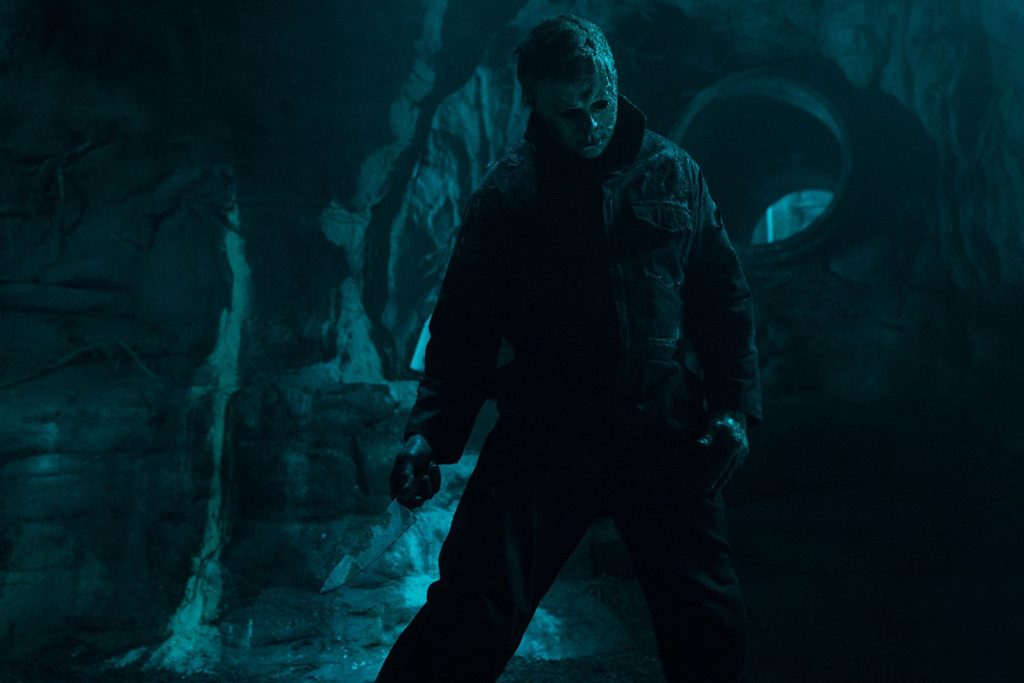
The arc of the new sequels shows just how much of a force Michael Myers is when he’s unleashed, but a lot of the power he has is strictly given to him by the fear of those he encounters. Each entry slowly takes off the mask of Michael Myers and exposes him as no longer the mythical serial killer that stalks the streets, but as a person who has darkness within and hides behind the mask, which can be applied to any of the townspeople, including Laurie herself. Michael Myers is a reflection of Laurie Strode’s worst fears. He is the source of all her trauma. It’s when Laurie accepts this and embraces it, rather than running away, that the haunting legacy of Michael Myers dissipates, and Haddonfield can finally heal.
Overall, Halloween Ends has only love and respect for its source material. The execution may be wonky here and there, and some of the creative decisions can be questionable at times, but when you take a step back and look at the arc of the whole series, Halloween Ends serves as one of the better sequels we’ve got from the franchise in a long while. There is no doubt that it’ll be a divisive piece among fans, but in time I bet it’ll be looked back on and appreciated.
